© 2016-
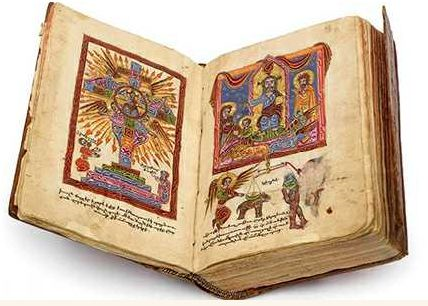
Need any help? Contact Us
ՀՐԱՏԱՐԱԿՎԵԼ Է «ՀԱՅԿԱԿԱՆ ՈՐՄՆԱՆԿԱՐՉՈՒԹՅՈՒՆ» ԺՈՂՈՎԱԾՈՒՆ
Karen Matevosyan
Doctor of History
THE ARMENIAN MANUSCRIPT BOOK OF THE 9th -
The manuscript book has a significant place in the Armenian culture. It is not only valuable for its rich contents (historical, theological, philosophic, literary and other subjects), but also as a piece of art with its material, calligraphy, miniature painting, neumography and at the same time as an exact document with its colophons speaking about the place and the date of its writing, the persons who participated in its creation, as well as numerous diverse events which took place at that time. From this viewpoint each manuscript is an absolutely original piece of culture.
Through numerous and diverse trials of centuries nearly 31,000 Armenian manuscripts have reached our days. The greatest collection of Armenian manuscripts: 11,350 complete manuscript books and nearly 2,200 fragments of manuscripts are kept in the Yerevan Mesrop Mashtots Scientific research Institute, the Matenadaran. Nearly 4,000 Armenian manuscripts are kept in the Armenian Congregation of Mkhitarists of Venice (Italy) and the same number in Jerusalem (Israel) at the Armenian Patriarchate. Nearly 2,000 manuscripts are kept in the Armenian Congregation of Mkhitarists of Vienna (Austria). Thousands of manuscripts are kept in the Catholicosate of the Mother See of Holy Echmiadzin (Armenia), as well as in Armenian monasteries abroad: in New Julfa near Isfahan (Iran), the Armenian Catholicosate of Antelias in Beirut (Lebanon), and in famous museums and libraries all over the world: Paris (France), London (Great Britain), Washington (USA), Saint-
Scientific studies of Armenian manuscripts and old writings, as well as the composing of first catalogues of manuscripts began in the 19th century and continue until the present time.
In the Middle Ages the creation of a manuscript book was not only a hard and complicated work, but also the result of collaboration between, at one hand, authors and calligraphers and, on the other hand, artists and craftsmen dealing with materials and things. Already in the Middle Ages Armenians called all works and processes included in manuscripts’ creation by the general term “art of writing”. The initiator of the Armenian art of writing and manuscript culture was Mesrop Mashtots who, after creating the Armenian alphabet, found a skilled Greek calligrapher called Hropanos and together with him elaborated all the diversity of Armenian letters. Only afterwards he began the translation of the Bible into Armenian.
The first great work of the Armenian writing art was the translation of the Bible which was called “The Queen of Translations” in new times for its perfection.
Later on, namely in the 10th -
In the 12th century the scribe Aristakes and in the 13th century Gevork Skevratsi stabilized the language and grammar canons of the writing art. Later, the writing art was perfected by such famous teachers and skilled connoisseurs of calligraphy as Vardan Areveltsi, Hovhannes Yerzynkatsi, Yesai Nchetsi, Grigor Tatevatsi, Hacob Ghrimetsi and others.
The Armenian manuscripts were created in so-
In monastic scriptoria the art of writing was transmitted from tutor to pupil and there were also schools of writing art which had their own traditions.
Armenian medieval scriptoria, the number of which reached 1.500, functioned on the entire territory of historical Armenia (the most part of them are now on the territory of Turkey), as well as in different countries where Armenian centers of Diaspora existed.
The creation of manuscripts was a complicated and laborious work, the master of which was called scribe. The pupils of monastic schools learned calligraphy during their studies, as well as preparing parchment, ink and dyes. The main tools of work were usually prepared in scriptoria by the scribes and miniature painters themselves. When the scribe and the miniature painter were working together, first the scribe wrote the text, leaving spaces for the miniatures on the pages, and then the painter began his work. Written and painted pages were then sewed together, part by part, which were then gathered to form a book and bound by the binder.
Inside the binding, a piece of cloth (mostly a stamped textile) was put on the leather covered wood, thanks to which precious samples of medieval clothes and textiles have reached our days. In order to protect the new book from the binding, fly leaves were put between them and often those were cut from very old manuscripts. So, they are valuable from the viewpoint of paleography. Before binding, or immediately after, the main colophon of the manuscript was written, giving information about the place and the time of the manuscript writing, the name of the scribe, the miniature painter, the customer, as well as some political or other events of the time.
Until now, the colophons of Armenian manuscripts were published in ten voluminous books (by Garegin Hovsepian, Levon Khachikian, Artashes Matevosian, Ashot Hovhannisian and Vazgen Hacobian) and the unpublished ones can fill the same quantity of volumes. They are inestimable sources, as they register events having taken place immediately at the time of the manuscript writing and they are therefore trustworthy.
Armenian manuscripts are also valuable because of their ornamentation or miniature painting. Even if the miniature painting is inseparable from the manuscript book, during centuries it developed by itself and thanks to its richness, stylistic variety, iconographic and chromatic original peculiarities it became a separate genre of art.
The Armenian miniature painting is distinguished for its monumental character, the oriental type of the personages, their local garments, as well as ornaments proper to Armenian art. Among Armenian manuscripts most of all Gospels were decorated with religious subjects, then Bibles and other religious ritual manuscripts. Painting the portraits of customers was very frequent, either. Ornaments can be also seen in historical manuscripts, but they are not numerous.
The role of customers was important for the development of writing art; in the colophons of manuscripts they are called receivers. Thanks to their material support manuscripts of great value were written, as they were written on expensive parchment and the art of writing was quoted as a well remunerated work. The contents of the books were conditioned by demand. Naturally, the religious books were the most asked for (first of all Gospels and complete Bibles) as well as religious ritual manuscripts, which were necessary for clergymen.
But progressively historical books, miscellanies containing cognitive information and others became popular either. Manuscripts were written for different purposes, including teaching.
Manuscripts dated before the 10th century, which have reached our days, are written only on parchment. There are Armenian manuscripts dating back to 981 and 998 written on paper. The study of the first of them showed that the paper had been made in the city of Ani from flax shoots and its composition was different from Chinese or Arabic paper. During following centuries, progressively spreading, paper became the main writing material for manuscripts. But, as it was not as solid as parchment, losses of paper manuscripts are greater. In medieval Armenia paper was used in huge quantities; it was imported from Damascus and Tabriz either, and later also from Europe.
The oldest samples of Armenian miniatures known until now are four miniatures added at the end the Echmiadzin Gospel of 989. They date back to the 6th century. Among complete and illustrated manuscripts one can cite the Gospel of Queen Mlke of 862 (Venice), the Lazarian Gospel of 887 (Matenadaran of Yerevan) and the Gospel of Kars of the 11th century (Jerusalem).
The 13th century is the period of the Armenian miniature apogee. It was the time when a number of talented miniature painters were working either in Major Armenia or in the Armenian Kingdom of Cilicia on the north-
At that period Armenian painters showed innovating approach either in iconography or in the stylistic variety.
The Armenian capital town of Ani (961-
One of the significant works of Ani miniature painting is the Haghpat Gospel of 1211 (Matenadaran, Ms. 6288), decorated by painter Margare; its ornamentation, penetrated by profane spirit, is obviously bearing the seal of the urban milieu and the life ambiance of Ani. The painter pictured ordinary people, some of his fellow citizens in the margins of Canon Tables and in other miniatures. One of them is a youngster carrying a fish, called Sheranik, next to whom the painter wrote: “Sheranik, bring me a fish every time you come” (Fig.1). In the margin of another Canon Table a musician is depicted sitting under a pomegranate tree (Fig. 2). Greatly original is also the miniature depicting The Entry into Jerusalem in which the family of the manuscript’s receivers is portrayed as the people meeting Christ: the father is standing near the door of the building, the mother is seen from the window, the two daughters are on the balcony and the three sons on the trees (Fig. 3). The value of the Haghpat Gospel miniatures is inestimable for the history of the Armenian medieval art and urban culture.
The Gospel Targmanchats of 1232 is distinguished for its original iconography, its chromatic range and the dramatic spirit of its Evangelic cycle. It was decorated by two painters, both called Grigor, one of whom is the author of ornaments and the other painted the pictures of the Evangelic cycle; the latter lived and worked in the region of Artsakh.
The Armenian miniature reached a high level of development in Cilicia. Being based on national rich painting art traditions, it borrowed also the best artistic acquisitions of the neighboring nations (especially Byzantium). The best samples of the Armenian miniature painting of the 13th -
The most famous of them is Toros Roslin whose art is a creative performance based on innate talent, skills reaching perfection, brilliant imagination and rich inner spiritual world. Art critics called him a “precursor of the Renaissance” and a “virtuoso of ornament”. The painter’s art is distinguished with compositional and iconographic innovations.
Cilicia was a very important center of East-
It is natural that merchants of Venice and Genoa had strong collaboration with Cilicia. In Armenian miniatures of Cilicia one can see the echoes of those commercial and cultural ties. For instance, in a manuscript written in 1286 for the Cilician King Hetum and called the Lectionary of Hetum, even elements characteristic to the Chinese art can be seen in the ornamentation of the title-
One can have some opinion about the knowledge about China in the Armenian milieu of Cilicia by the information given in a work by Prince Hetum of Corycus (in European historiography he is known as Hayton l’Arménien (Hayton the Armenian). In 1307 he went to France as the delegate of Amaury, Governor of Cyprus, met Clement V, Pope of Rome, and was entrusted by him to write the work La Flor des histoires de la terre d’Orient. The work consists of four parts. The first of them shortly presents fourteen countries of the East and their people (those are China, Uygoria-
In the 1290-
An original school of miniature painting was founded at the end of the 13th and the beginning of the 14th centuries in the University of Gladzor, one of the most famous Armenian medieval universities (province of Vayots Dzor in Syunik). Miniature painters Momik, Toros Taronatsi and Avag worked there, generalizing the rich experience of local miniature painting and that of Cilician Armenia. They managed to get new quality and made a valuable contribution to the development of book art in Major Armenia. Among these artists Momik was also a skilled architect and sculptor.
The miniature painting school of Vaspurakan is a quite original painting direction and the main period of its activities were the 15th – 16th centuries. Miniatures from Vaspurakan are rich with iconographic ancient compositions. Two main principles are dominant in Vaspurakan miniatures: symbolic and narrative. That is to say that in one case the iconographic scene is presented quite briefly, in an almost symbolic version, and in the other case in a quite narrative way, with more details. Manuscripts can be met in which these principles are used in parallel. In Vaspurakan miniatures scenes of real life can be seen, as, for instance, the miniature by Grigor Khlatetsi in which a scene of teaching is depicted (Matenadaran, Ms. 374, f. 14 r, fig.6).
In the 14th century the art of Armenian miniature continued to be practiced and developed in the Armenian Diaspora, especially in The Crimea, Iran, and later on in Constantinople.
Pictures of real people, or conventionally said portraits, have a special place in the Armenian miniature painting. They give us the possibility of getting an idea about the skill of painters, as the miniatures of the Evangelic Cycle were mostly copied and imitated from models, while painting real people, mainly the receivers, they could only rely on their own abilities. Self portraits of many miniature painters have been preserved, such as Toros Taronatsi, Avag, Sarkis Pitzak, Tzerun and others. And among receivers, the individual or family portraits of whom have reached our days, one must cite King Gagik of Kars (with his wife and daughter), King Levon II of Cilicia with Queen Keran (in another case, with his children, Queen Marion, Prince Vasak and others. Quite naturally, these portraits give valuable information about those personages, details of the garments and jewels of that time, and so on.
Summarizing our words about miniature painting, we may say that it is the expression of the artistic mentality and taste of the Armenian people, their faithfulness to traditions and their spirit of innovation.
The Armenian manuscript culture, which had passed through a long way of evolution, maintained its existence even after book printing (the first Armenian book was printed in 1512). Armenian manuscripts are now studied more systematically; manuscripts kept in collections of diverse countries all over the world are digitalized. The main centre of studies on Armenian manuscripts is the Yerevan Mesrop Mashtots Institute, the Matenadaran.
References:
1. See H. Tashean, Essay about Armenian paleography, investigation of Armenian art of writing (National Matenadaran, N 28), Vienna, 1898 (in Arm.); G. Hovsepian, The Art of Writing in Ancient Armenia, Part III, Map of Armenian Paleography with 95 plates, Vagharshapat, 1913 (in Arm.); H. Ajarian, The Armenian Alphabet, Vienna, 1928 (in Arm.); A. Abrahamian, History of Armenian Alphabet and Art of Writing, Yerevan, 1959 (in Arm.); A. Matevosian, ‘The Armenian Manuscript Book and Art of Writing”, Echmiadzin, II-
Stone M. E., Kuymjian D., Lehmann H., Album of Armenian Paleography, Aarhus, Aarhus University Press, 2002; Arménie. La magie de l’écrit, sous la direction de Claude Nutafian, Marseille, 2007, etc.
2. To prepare parchment they used sheep (lamb) or calf processed skin. In 1202, 660 calf skins were used to write the Homilies of Mush. From the end of the 10th century paper was also used in Armenia parallel to parchment, but parchment was a preferable material for miniature painting, as it was stronger and .... The main means of work as ink and dyes were prepared in scriptoria by scribes and painters themselves.
3. Armenian manuscripts have usually reached our days with five scripts: uncials, right uncials, round script, inclined script and cursive (each of them has its varieties). The uncials are the most ancient script and stone inscriptions are also written in uncials.
4. Miniature painting as art was known from the most ancient times (China, Egypt, Greece and Rome). After the spreading of Christianity the art of miniature painting highly developed in Egypt (Alexandria School), in Palestine and Syria. In the Middle Ages it flourished in the Byzantine Empire and spread in the countries of Western Europe, either. The Armenian miniature painting began to develop in strong relation with the most ancient centers of Christian culture and through centuries it got original features.
5. A Book of Knowledge and Belief by the Priest David, A study of manuscript, an autotype, commentaries by A. Matevossian, Yerevan, Matenadaran, 1997, pp. 34-
6. A. Bakhchinian, Armenians in China. Armenian-
7. K. Matevosyan, The Gospel of Haghpat, A Unique Sample of the Miniature Painting of Ani, Yerevan, “Nairi” Publishers, 2012, p. 5-
8. A. Bakhchinian, op. cit., [p. 39-
9. I. Drampian, Lectionary of King Hetum II, Yerevan, Nairi publishers, 2011, p. 150.
10. Recueil des Historiens des Croisades, Documents Arméniens, Tome second, Paris, Imprimerie Nationale, 1906, (Hayton, La flor des histoires de la Terre d’Orient), p. 121.
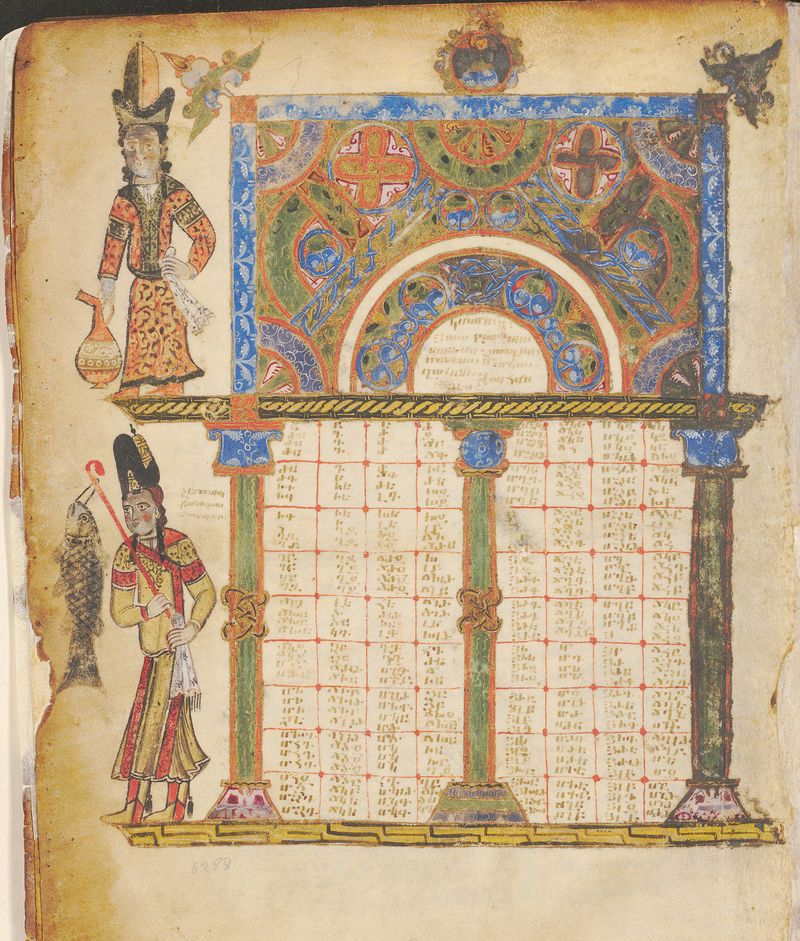

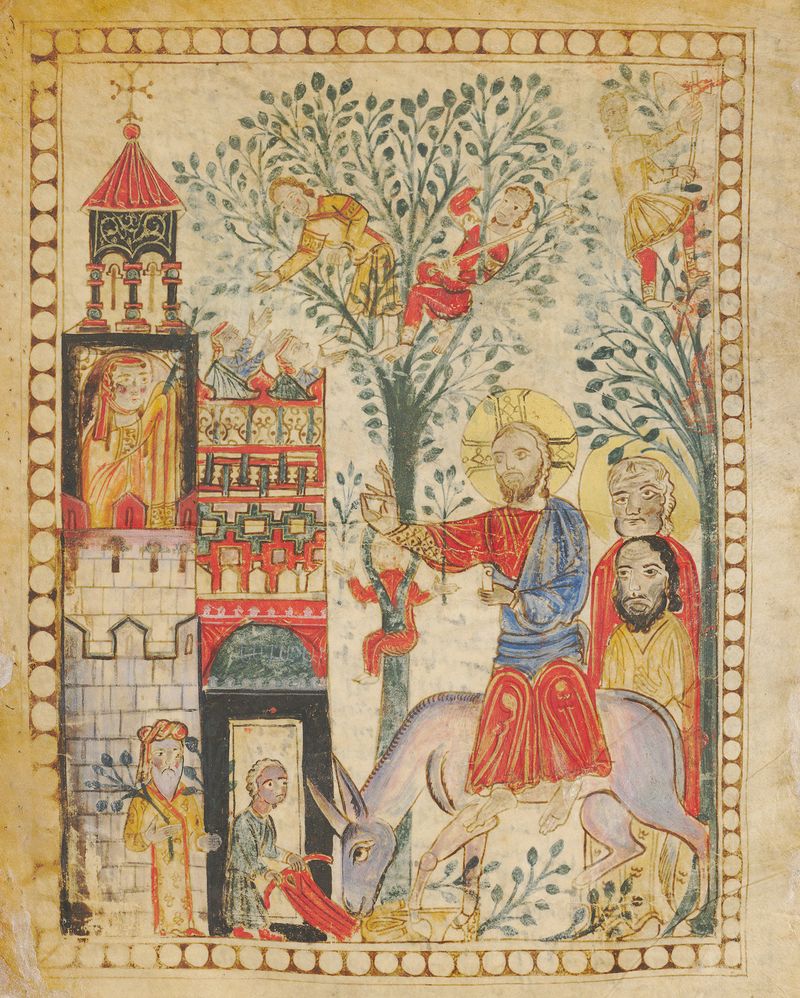

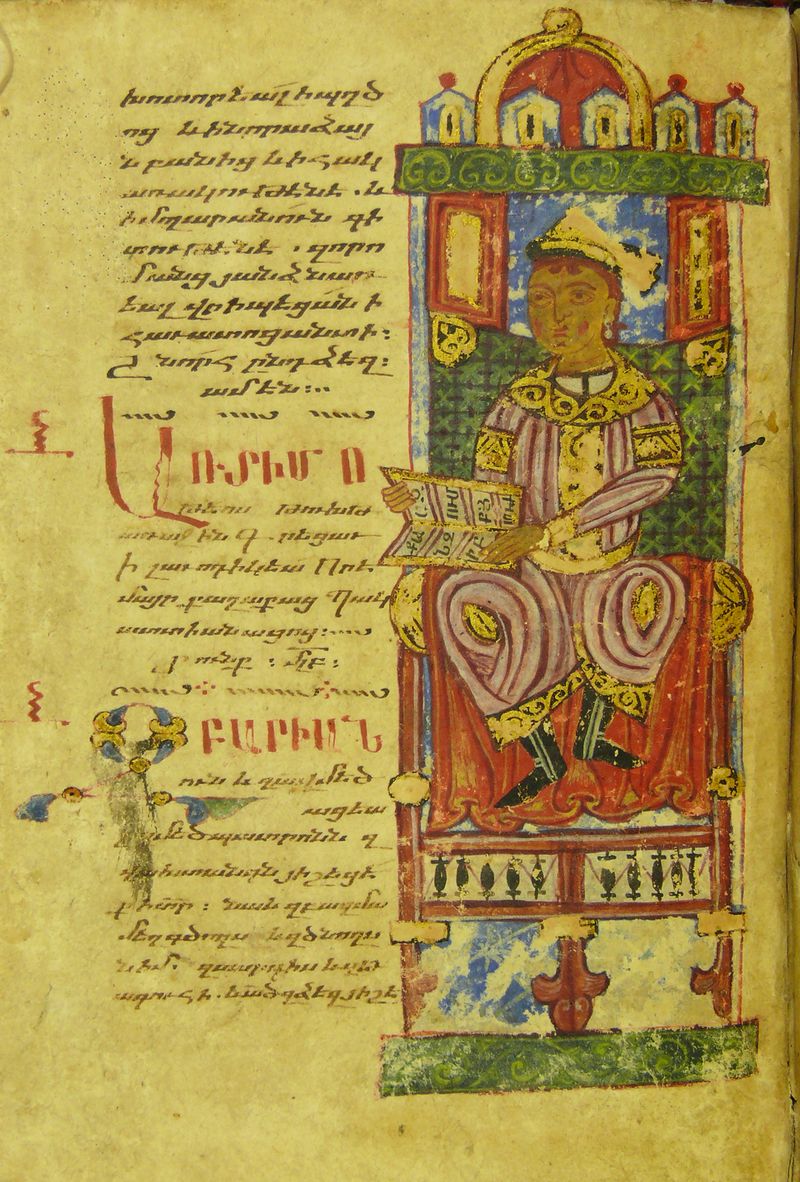
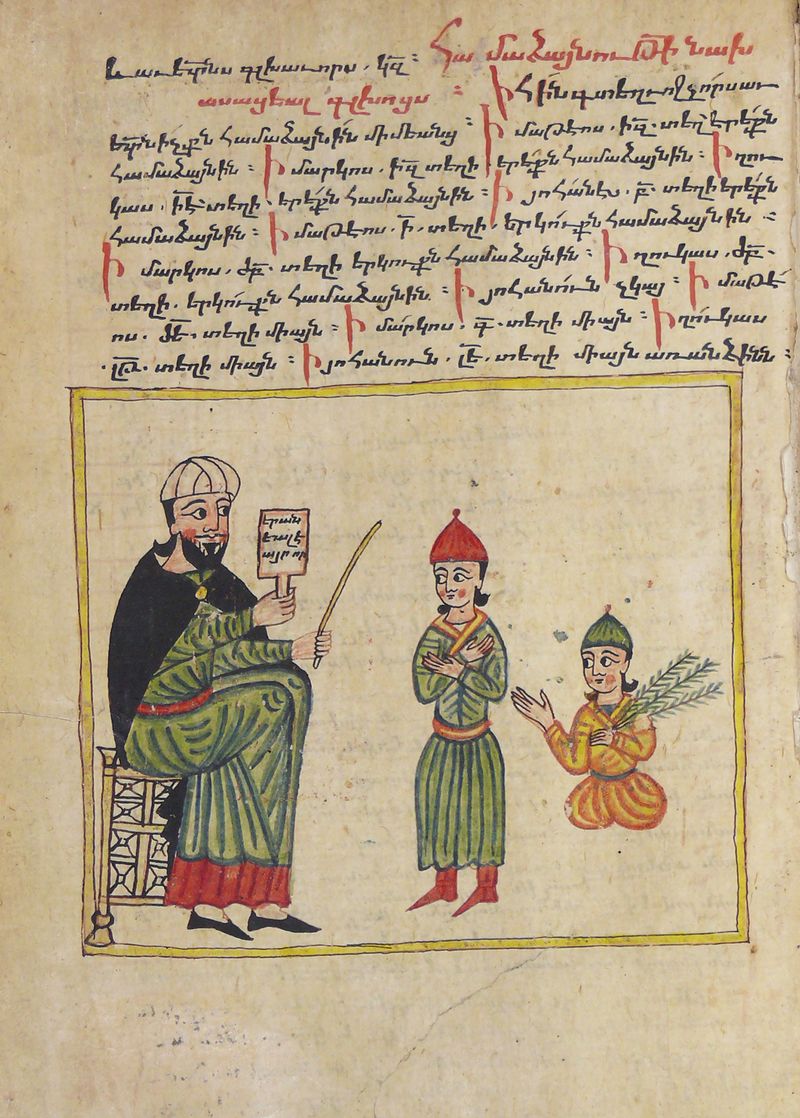


© 2016-








Սույն կայքում տեղադրված նյութերը այդ թվում` բոլոր նկարները, պատկերները, տեքստային նյութերը, կարող են օգտագործվել անձնական, կրթական, ինչպես նաև տեղեկատվական նպատակներով, ArmenianArt.org կայքի անվան պարտադիր հղումով։






| Գրքեր |
| Հոդվածներ |
| Մատենագիտական |
| Քարտեզներ |
| Ճարտարապետություն |
| Քանդակագործություն |
| Որմնանկարչություն |
| Մանրանկարչություն |
| Գեղանկարչություն |
| Կիրառական արվեստ |
| Հին լուսանկարներ |
| Պատմական ակնարկ |
| Ուսումնասիրություն և վերականգնում |
| Նյութեր |
| Հայկական ձեռագիր գիրքը |
| Հնագրություն |
| Գրչության կենտրոններ |
| Վիմագրություն |
| Նյութեր |
| Մեր մասին |
| Օժանդակություն |
| Կապ |